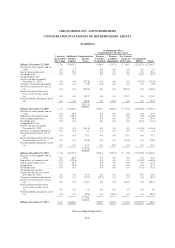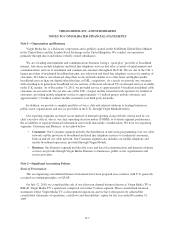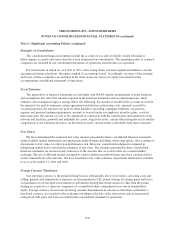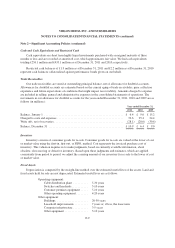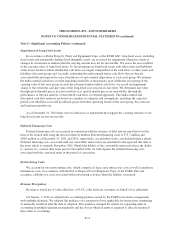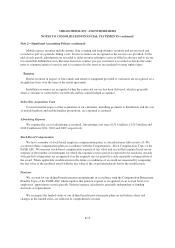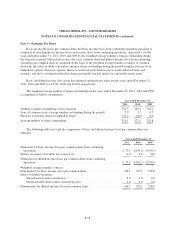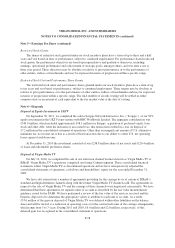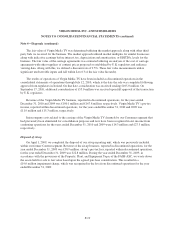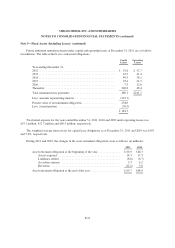Virgin Media 2011 Annual Report Download - page 101
Download and view the complete annual report
Please find page 101 of the 2011 Virgin Media annual report below. You can navigate through the pages in the report by either clicking on the pages listed below, or by using the keyword search tool below to find specific information within the annual report.VIRGIN MEDIA INC. AND SUBSIDIARIES
NOTES TO CONSOLIDATED FINANCIAL STATEMENTS (continued)
Note 2—Significant Accounting Policies (continued)
Prior to the adoption of this guidance and with the exception of mobile revenue transactions, bundled
revenue arrangements in our Consumer and Business segments generally did not contain separate units of
accounting. Subsequent to the adoption of this guidance, these bundled revenue arrangements generally have the
following units of accounting: an up-front installation element and an ongoing service provision element. Both
prior and subsequent to the adoption of this guidance, mobile revenue transactions involving bundled equipment
and service revenue have separate units of accounting.
Revenue is allocated to each unit of accounting based on a selling price hierarchy. The selling price for a
deliverable is based on its vendor-specific objective evidence (VSOE) if available, third party evidence (TPE) if
VSOE is not available, or estimated selling price (ESP) if neither VSOE nor TPE is available. Currently, we do
not sell installation services or ongoing rental separately on a regular basis and therefore we do not have the
evidence to support VSOE for these deliverables. We use evidence of the amounts that third parties charge for
similar or identical services, when available, to establish selling price. In some cases, when we are unable to
establish VSOE or TPE, we use our best estimate of selling price. Our objective in determining the best estimate
of selling price is to establish the price at which we would transact a sale if the deliverable were sold regularly on
a stand-alone basis. We consider all reasonably available information including both market data and conditions,
as well as entity specific factors. In addition we consider all factors contemplated in negotiating the arrangement
with the customer and our own normal pricing practices. These considerations include competitor pricing,
customization of the product, profit objectives and cost structures.
Once we have established the selling price of each deliverable, we allocate total arrangement consideration
by applying the relative selling price methodology. Prior to the adoption of this guidance, where the fair value of
the delivered element could not be determined reliably but the fair value of the undelivered element could be
determined reliably, the fair value of the undelivered element was deducted from total consideration and the net
amount was allocated to the delivered element based on the “residual value” method. This methodology is no
longer permitted under the new guidance and we now allocate revenue for all multiple-element arrangements
based on the relative selling price methodology. We recognize revenue on each deliverable in accordance with
our policies for product and service revenue recognition, as discussed below.
In all bundled revenue arrangements, the amount of revenue recognized for any up-front elements, including
business and consumer installation services and mobile handsets, is limited to the amount of cash collected.
Consumer
Fixed line telephone, cable television and internet revenues are recognized as the services are provided to
customers. At the end of each period, adjustments are recorded to defer revenue relating to services billed in
advance and to accrue for earned but unbilled services.
Installation revenue for our Consumer segment is recognized in accordance with the provisions of the
Entertainment—Cable Television Topic of the FASB ASC in relation to installation fees for cable television,
fixed line telephone, and broadband internet services. Installation revenues are recognized at the time the
installation is completed to the extent those fees are less than direct selling costs, which is generally the case.
Mobile handset and other equipment revenues are recognized when the goods have been delivered and title
has passed. Equipment revenue is stated net of discounts earned through service usage.
F-12






